

 The Accurate Reloading Forums
The Accurate Reloading Forums  THE ACCURATE RELOADING.COM FORUMS
THE ACCURATE RELOADING.COM FORUMS  Hunting
Hunting  Hogs, Warthogs, Wild Boars, Javelinas Hunting
Hogs, Warthogs, Wild Boars, Javelinas Hunting  Changing Morphology of feral hogs
Changing Morphology of feral hogsGo  | New  | Find  | Notify  | Tools  | Reply  |  |
| one of us |
Perhaps larryshore's observations of seeing more "domestic looking" ferals may reflect two things. First, as he has observed by trail cam, that domestic hogs are constantly being introduced into the gene pool. As a result, generational changes in adaptation to the wild have to keep "starting over" within the population. Second may be the environment of central Florida. The warmer, wetter climate of the area, as well as the type of native vegetation, may not disadvantage the more "domestic" features as much as in some harsher environment. Hogs in a colder, drier climate where things like thicker hair and deeper-rooting snouts might be a survival advantage, may take fewer generations to start looking "wild". But regardless of how many generations pass, a population will always carry some recessive genes which can crop up in the form of spots, shorter legs, and curly tails. | |||
|
| One of Us |
Damn good post Stonecreek. Even the rocks don't last forever. | |||
|
| One of Us |
When I first encountered the hogs with ear tags, I contacted local law enforcement as well as the FL Wildlife Commission. My first concern was whether I was committing a crime by shooting these hogs. My second concern was whether they had escaped or were stolen. I was assured that I had the right to shoot the hogs on my property. I have stomped around the woods and swamps for a long time. I have seen or heard of any such thing. As I discussed this with various people, there were a number of theories including the following: 1- they were tagged in a research project. In fact,UF has such a project and they are probably 60 miles away as the crow flies. 2- these were bar hogs. Apparently, a local club tagged its bar hogs and kept records. The problem is that some were sows. 3- there were various escape theories. Some months later, one of my neighbors told me about one of his neighbors turning loose the breeding stock. Interestingly, we see the same characteristics on both properties . I doubt they are releasing hogs near the large tract. | |||
|
| One of Us |
Have any of you ever checked into the size of the home range of a sounder or a boar? Even the rocks don't last forever. | |||
|
| one of us |
The sounders seem to hang around the same place -- a relatively small area -- until they are disturbed or food runs low. I've seen the same sounder on the same game cam photos for several weeks running. I've also seen mature boars on the same game cam photos for several times in a row, but they seem to move on more quickly than a sounder. I would assume that, like the males of most species, they range more widely than the females and young in search of breeding opportunities. I've also found that feral hogs tend to follow water -- that is, they will move away from an area where surface water has largely dried up in favor of an area where more ample surface water is available. Even when they have adequate drinking water, they would rather be in a wetter environment than a drier one. These are just casual observations, but I'm sure that someone has studied feral hog ranges and has some more precise information. | |||
|
| One of Us |
In this area, sounders will stay in an area for a varying period of time and then move on as much as 6 to 8 miles in a straight line, only to return a few days or weeks later. Someone I talked to claimed that a TP&W biologist stated that a mature boar ranged over an area as large as 10 square miles. From personal experience many of the single boars I have encountered have been younger animals that have been chased away from a sounder by the adult sows or by the dominant boar in the area. Even the rocks don't last forever. | |||
|
| Moderator |
all domestic animals "change" after a few generations wild - largely due to environmental and survival selection -- if darker colors live longer they may bred more - if sloping heads eat more, they live longer, etc ... humans do EXACTLY the same thing, in both directions,, marathon parents might have a keyboard commando ... so, if the hairy, longer, move more, darker, etc pigs live longer, they bred more and more often, and those pass along ... parallel morphology happens ALL over .. Tasmanian devils/wolves aren't caninds .. but certain look/act like them - jackels and dogs, and politicians everywhere opinions vary band of bubbas and STC hunting Club Words aren't Murder - Political assassination is MURDER Information on Ammoguide about the416AR, 458AR, 470AR, 500AR What is an AR round? Case Drawings 416-458-470AR and 500AR. 476AR, http://www.weaponsmith.com | |||
|
| One of Us |
Even the rocks don't last forever. | |||
|
| one of us |
Stonecreek-don't disagree that there are a number of diseases which may be passed from swine to us-- An old pilot, not a bold pilot, aka "the pig murdering fool" | |||
|
| One of Us |
I have hunted wild pigs on the big Island, and have taken one that was very similar, except in black coloration and possibly smoother hair, to a wild Eurasian boar. I don;t have a picture of him, but here is a recent video of a big hog from hawaii: https://www.youtube.com/watch?v=H7XOw1EssxQ And castrating one after capture https://www.youtube.com/watch?v=CPG-OF4bbAA And dog hunt https://www.youtube.com/watch?v=kUV-v8tzNik And like StoneCreek mentioned above, Natural selection working on feral hogs in tropical places would be a little different than in a temperate zone Steve "He wins the most, who honour saves. Success is not the test." Ryan "Those who vote decide nothing. Those who count the vote decide everything." Stalin Tanzania 06 Argentina08 Argentina Australia06 Argentina 07 Namibia Arnhemland10 Belize2011 Moz04 Moz 09 | |||
|
| One of Us |
Just an observation here, nothing more. Hogs were introduced into what would become America in the 1500', roughly 500 years ago. I don't know what any one else has experienced, but having grown up in the area where I live, I can remember when there were no pigs in this area. I killed my first feral hog in 1994 or '95 and it basically, except for coloration looked like a European Wild Pig. Massive front shoulders sloping back to smaller hind hind legs, long head and long hair with basically a mane running from behind its ears almost to the top of the hams. Across the country there have been so many intentional releases of both pure European stock along with various domestic varieties and combine that with hogs habit of wandering over large areas and add to that producing up to 3 litters a year and there will be a lot of variation within the sounders in any area. Even the rocks don't last forever. | |||
|
| One of Us |
| |||
|
| One of Us |
Thank You, really interesting article. Some folks claim that pigs are second to cats as being the least domesticated of the animals humans have manipulated over the centuries. Cats can revert to a feral life style in just a few days or weeks in most cases. Dumping a cat in a rural area normally doesn't affect the cat that much, they have retasined their hunting instinct asnd adapt to their new situation quite readily. Pigs are very similar, but because of all the different varieties that humans developed to meet particular commercial demands, feral hogs can take from just a few generations to possibly never showing the physical characteristics of a true European/Eurasian wild pig depending on the gene pool in any particular area. Even the rocks don't last forever. | |||
|
| One of Us |
Cats don’t become the cat from which they evolved. They just become feral. Dog don’t become wolves they become dingos. A small dog won’t become dingo like - most wont survive. Most dog breeds are not sustainable/ survivable in any non human controlled natural environment. Hogs become feral but they don’t revert back to boars. To become pigs a very selective breeding of boars was done over time. That selective breeding cannot be undone.the evolution from hog to feral hog is a step forward (evolutionary) on the dna side not back. I also think a lot of hogs have been inbreed with wild boars ect that were released from hunting operations. Mike | |||
|
| One of Us |
You are correct neither cats nor hogs revert genetically back to the founder stock they were developed from, but they do adapt quicker to surviving in the wild faster than dogs. Also with hogs they can and will, depending on the genetics, begin developing the outward physical characteristics/appearance of wild boars such as heavier front quarters, sloping back from shoulders to hams, long hair coat and striped piglets. Even the rocks don't last forever. | |||
|
| one of us |
This makes my point. Wild or feral hogs has been around for centuries, but it is only within the last thirty or so years that their populations have exploded. So, something has changed. About forty years ago a friend who "cowboyed" for a large rancher invited me to go with him to a remote pasture lease which was at least 25 miles from the nearest town or settlement. He said to take my rifle along as he sometimes saw wild hogs there. Sure enough, we ran onto a big boar that I was able to shoot. This was the first wild hog I had ever seen or even heard of. Some ten years later I killed a couple of wild hogs on a deer lease that was about ten miles from the nearest populated place. As time went by, wild hogs were showing up closer and closer to human populations. Now, wild hogs roam right through the alleys of small towns in that part of Texas. So, what caused (or allowed) the hogs to exist ever closer to human populations over the decades? Apparently something associated with human-hog interaction. If anyone's got a better hypothesis than the effect of the removal of tainted (infectious) sewage effluent from the environment I'd be happy to entertain it. | |||
|
| One of Us |
Hypothesis on my part, I think the increase in hog numbers can be directly tied to the increase of hunters baiting for deer. A food source that had not been available was introduced and hogs capitalized on it. Add to that, as hog numbers began increasing so did the interest in hunting them which led to people buying and releasing domestic hogs and/or true european wild boar/pigs both intentiona;lly and escaspees from high fence operations. To quote a cliche, it was "The Perfect Storm", a highly aggressive/opportunistic species with a tremendous ability to reproduce found a niche that no other species occupied. The reason I draw a parallel between feral hogs and feral cats is that both filled a vacant spot in the North American wildlife pictutre both the javelina, which has a more specialized diet and habitat range and the ocelot/jaguaroundi and some include the margay have range limitations. Hogs just found a uninhabited niche and they filled it. Even the rocks don't last forever. | |||
|
| One of Us |
Bingo, give the man a cigar. He is exactly correct. | |||
|
| One of Us |
Yes. Fifty years ago, there were a few hog hunting operations in the east Tennessee and Kentucky areas, and very few elsewhere. Now there are 2-3 to 20 or more operations in many states. And most hunters love shooting a big hog. Ergo, more hogs everywhere. Steve "He wins the most, who honour saves. Success is not the test." Ryan "Those who vote decide nothing. Those who count the vote decide everything." Stalin Tanzania 06 Argentina08 Argentina Australia06 Argentina 07 Namibia Arnhemland10 Belize2011 Moz04 Moz 09 | |||
|
| One of Us |
Same thing down here. Probably the longer snout is better for digging and messing mud up, which is their favorite and most frenquent activity. I could imagine that the the boars with russian genetic (larger front quarter) are more agressive, more adapted to the wild, so they breed more/their offspring is more likely to succeed. | |||
|
| one of us |
But hog numbers have increased multifold even in jurisdictions where deer baiting is not allowed. I think if you'll calculate the calories and protein in the total amount of corn used for bait and divide it by the number of deer, swine, turkeys, quail, doves, raccoons, squirrels, and other creatures which consume it you'll find that the net amount of nutrition it adds to the habitat is negligible -- like probably less than 1% of the total from crops and natural vegetation. Besides, nutrition artificially added to the habitat should impact all (or many) species similarly, but there has been no similar and exponential increase in the population of any other corn-consuming species. | |||
|
| one of us |
Wr've got wild hogs, the classic Russian boar types, all recent arrivals, escapees from "Wild Boar " farms. Interesting to see the color patterns and the size of those southern ones. Says domestic pig to this cowboy. Grizz Indeed, no human being has yet lived under conditions which, considering the prevailing climates of the past, can be regarded as normal. John E Pfeiffer, The Emergence of Man Those who can't skin, can hold a leg. Abraham Lincoln Only one war at a time. Abe Again. | |||
|
| One of Us |
Like I said/. it is a hypoithesis on my part, but there has to be some correlation since there were basically no pigs in this part of north Texas until after the interest in deer hunting took off in the mid to late 1980's. Year roind feeding played a role, as did landowners limiting the number of people that had access to their land and many smaller acreage tracts, 100 acres and smaller that got taken out of production and reverted back to brush land. I service 15 feeders depending on the time of year and from personal observations once hogs find an active feeder the deer, turkey, squirrels etc, get dang little corn once they go off since nothing stays around when the pigs move in. I do not believe it has anything to do with nutritive value but availability. Below is a nutritional chart for dry yellow Dent Field corn which is the predominant variety being used as game feed. Nutrition Facts Generic - Dent Field Corn Servings: 1.0 Calories 100 Sodium 10 mg Total Fat 2 g Potassium 0 mg Saturated 0 g Total Carbs 21 g Polyunsaturated 0 g Dietary Fiber 2 g Monounsaturated 0 g Sugars 0 g Trans 0 g Protein 3 g Cholesterol 0 mg Vitamin A 2% Calcium 0% Vitamin C 0% Iron 4% *Percent Daily Values are based on a 2000 calorie diet. Your daily values may be higher or lower depending on your calorie needs. One fact that people overlook involves the breeding biology of pigs versus any of our other native species. They have no specific breeding season, they have litters ranging up to 8 piglets, and can produce such litters twice a year, the sows reach sexuasl maturity at around 11 months of age, so not that much unlike rats can quickly over populate an area. Also as with any other organism there are factors in nature that may not or are not that easily identifiable that contribute to the success or decline of a species. The decline of jackrabbits and both bobwhite and blue quail in this area come to mind. In the 1970's here in most of Young county, seeing a deer was an event, now I can't drive around this part of Young county including inside the city limits of Olney with out seeing several head of deer daily. There are several factors that have aided in the expansion of feral hogs but the increased availability of a food source simply can not be ruled out as playing no part. Even the rocks don't last forever. | |||
|
| One of Us |
Just for information a new hunting reserve has opened up in Northern Arizona. Web site photos show what appears to be a mix of feral and Russia type hogs. So it looks like we have feral hogs in Arizona now. Will be interesting to see how this works out. I know nothing about the ranch its self but have hunted the area for deer and elk in the past. John Wayne had his ranch in this area some years past. Here is the web site. www.blueroosterhuntingranch.com Never rode a bull, but have shot some. NRA life member NRA LEO firearms instructor (retired) NRA Golden Eagles member | |||
|
| One of Us |
As we say here in Texas when someone says they don't have hogs on their property, just wait as while and you will! Even the rocks don't last forever. | |||
|
| One of Us |
Lets don't forget the hogs adaptability and the lack of natural predators once those piglets get up to 10 or 15 lbs. | |||
|
| One of Us |
The question is what happens when there is a very low count of predators for animals that size to start. Having introduced the hogs into an area that had nothing similar I cannot see any good coming out of this. The fences they have won't hold them back and there are natural pathways (following the river) into populated areas down stream. I am surprised that AZ Game and Fish didn't have something to say about the introduction of the hogs since they had a massive eradication project north of Payson AZ to get rid of a population that a homesteader had turned loose in the 1960's. By all account had trapped them out. Never rode a bull, but have shot some. NRA life member NRA LEO firearms instructor (retired) NRA Golden Eagles member | |||
|
| One of Us |
BINGO, although 10 to 15 pounds I feel is on the low side, but you have 4 to 6 or more in a large group, that go 30 pounds plus each, and a coyote or bobcat is not going to come out on the winning end. More so if there are two or three Mama's around. Even the rocks don't last forever. | |||
|
| One of Us |
| |||
|
| One of Us |
I would say predominantly feral hog. Although the ears aren't floppy and the head shape is more like true wild stock. From what can be seen of the body in the top picture it is hard to tell if the front shoulders are larger than the hindquarters orv if the back is fairly straight or slopes similar to a buffalo. Higher at the shoulders sloping downward toward the tail. Even the rocks don't last forever. | |||
|
| One of Us |
I shoot some whose teeth are absolutely black. Others are not. Do you all encounter that? | |||
|
| One of Us |
| |||
|
| One of Us |
I think the discussion concerning morphology is that people are noticing the changes/variations thjat are showing up in differentareas of the country and within different sounders. Even the rocks don't last forever. | |||
|
| One of Us |
That is a beautiful hog--and probably as wild looking as any "regressed" feral hog will ever get. Only an introduction of pure Eurasian breeding stock could make them look any more like a Eurasian. The Eurasian is evolved to handle colder winters than our feral hogs, and might not do as well in hot climates. Here is one with similar characteristics:  Steve "He wins the most, who honour saves. Success is not the test." Ryan "Those who vote decide nothing. Those who count the vote decide everything." Stalin Tanzania 06 Argentina08 Argentina Australia06 Argentina 07 Namibia Arnhemland10 Belize2011 Moz04 Moz 09 | |||
|
| One of Us |
| |||
|
| One of Us |
Okay, look at the animal in picture number five. Notice the hair coat. Were the animal laying on the ground, my guess is the front shoulders were slightly taller than the hind quarters. I could be wrong, which is no great stretch, but I feel the term "Razorback" concerns a straight/level back, the hind quarters and the shoulders being level all the way. No increase in height from the front shoulders to the hams, no rounding/sloping mid body to the shoulders and hams. Even the rocks don't last forever. | |||
|
| One of Us |
At this link, some of these semi-tropical Asian wild pigs don't look nearly as "tough" and "wild" as our displayed feral pigs. https://www.ecologyasia.com/ve...mammals/wild_pig.htm 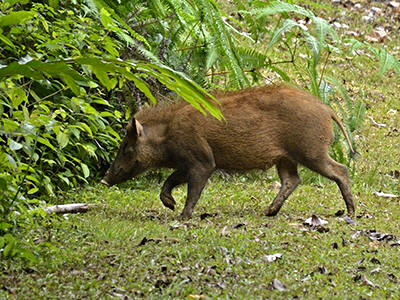 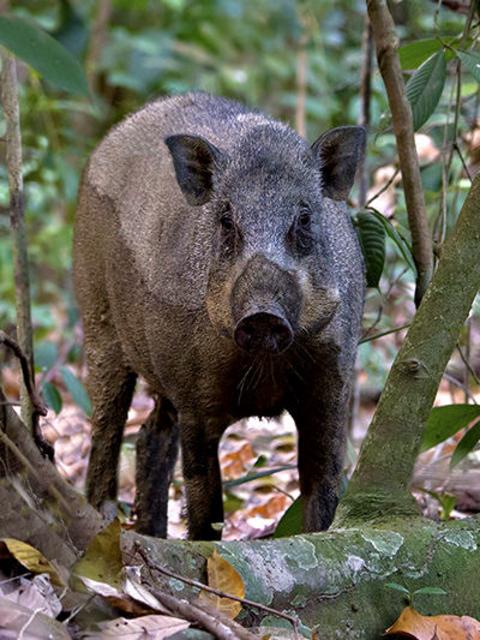 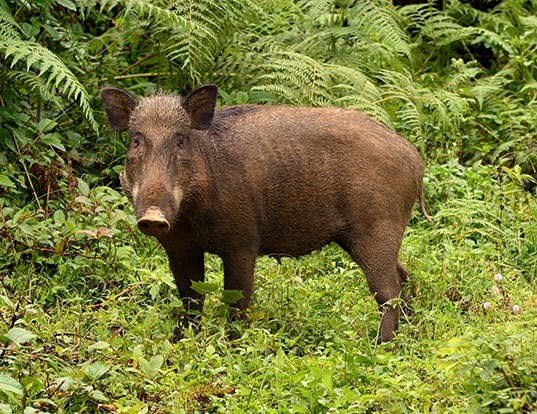 Pretty sure these are all sus-scrofa, capable of breeding with our pigs. Steve "He wins the most, who honour saves. Success is not the test." Ryan "Those who vote decide nothing. Those who count the vote decide everything." Stalin Tanzania 06 Argentina08 Argentina Australia06 Argentina 07 Namibia Arnhemland10 Belize2011 Moz04 Moz 09 | |||
|
| One of Us |
GWB, those are some wonderful looking big boars. I would bet a 30 pack of LoneStar beer that nearly every one of them still on the hoof would cross over the 300# mark--some look like 400#!! Steve "He wins the most, who honour saves. Success is not the test." Ryan "Those who vote decide nothing. Those who count the vote decide everything." Stalin Tanzania 06 Argentina08 Argentina Australia06 Argentina 07 Namibia Arnhemland10 Belize2011 Moz04 Moz 09 | |||
|
| One of Us |
If a person will look, the only difference scientifically between European Wild hogs, Sus scrofa and Domestic Hogs, Sus scrofa domesticus is the addition of the word domesticus. This is a subject that is really interesting, if for no other reason than to see pictures of animals that for what ever reason have reverted, for lack of a better term, to physically looking like or close to the original founder stock which was the european wild pig/boar. Feral hogs and all the various domestic breeds, are not seperate species or sub-species, but resulted from human influenced genetic modification, GMO's. Even the rocks don't last forever. | |||
|
| One of Us |
About the only discrimination I make when it comes to hoglets is, I shoot the spotted ones first, then the tan/reds second and the blacks last. Or, I'll shoot the biggest whether it be a boar or sow, and if I walk up to it after I shoot it, and can smell the stink from 15' away, I don't skin and eat it. Not to wear it out, but a few more, just fer schitz n' giggles! ya! GWB 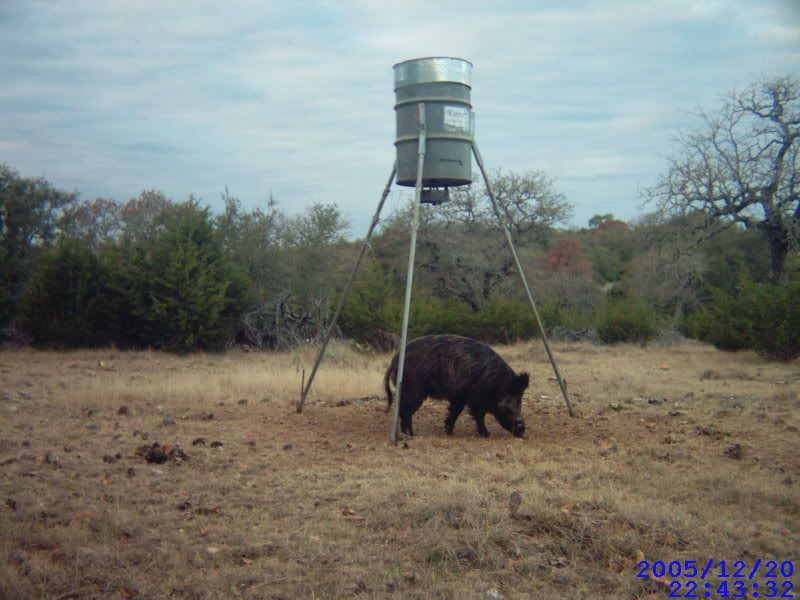 From 2005 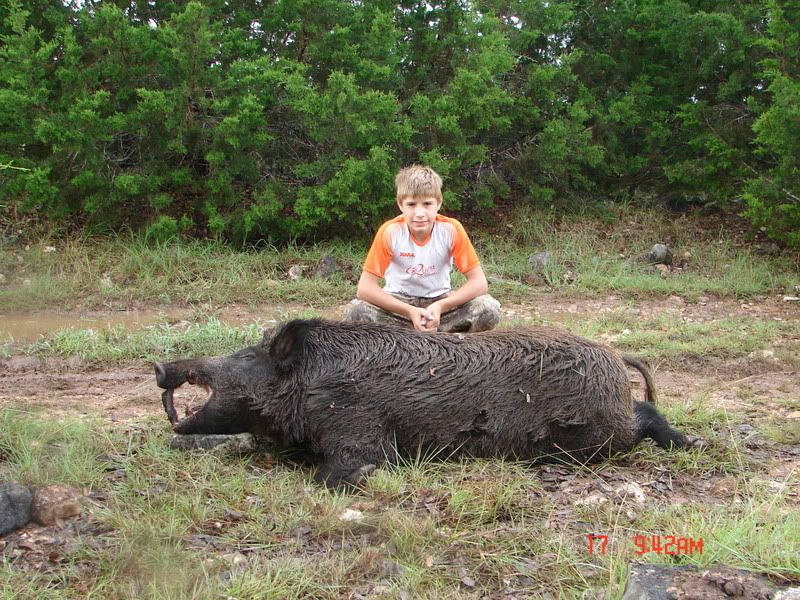 from circa 2007 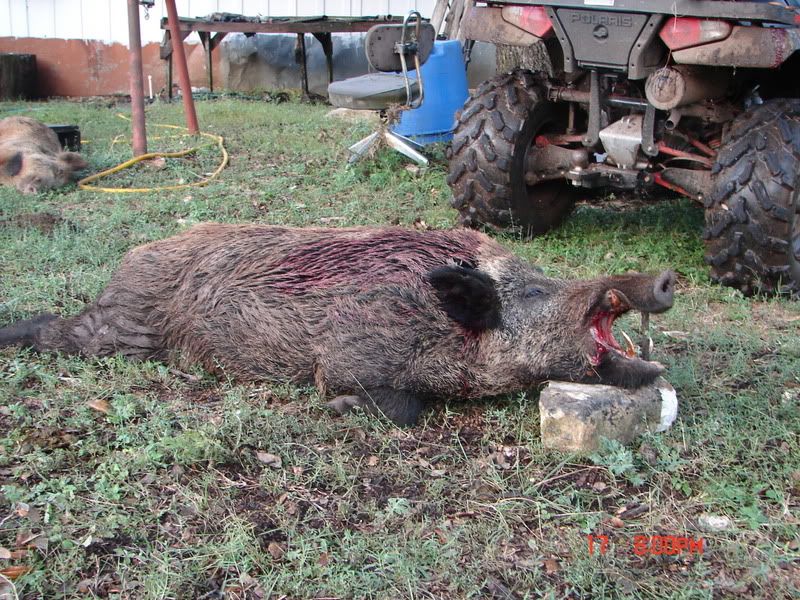 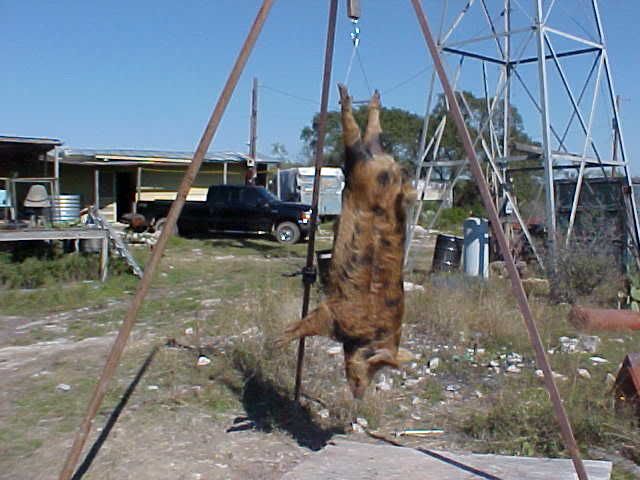  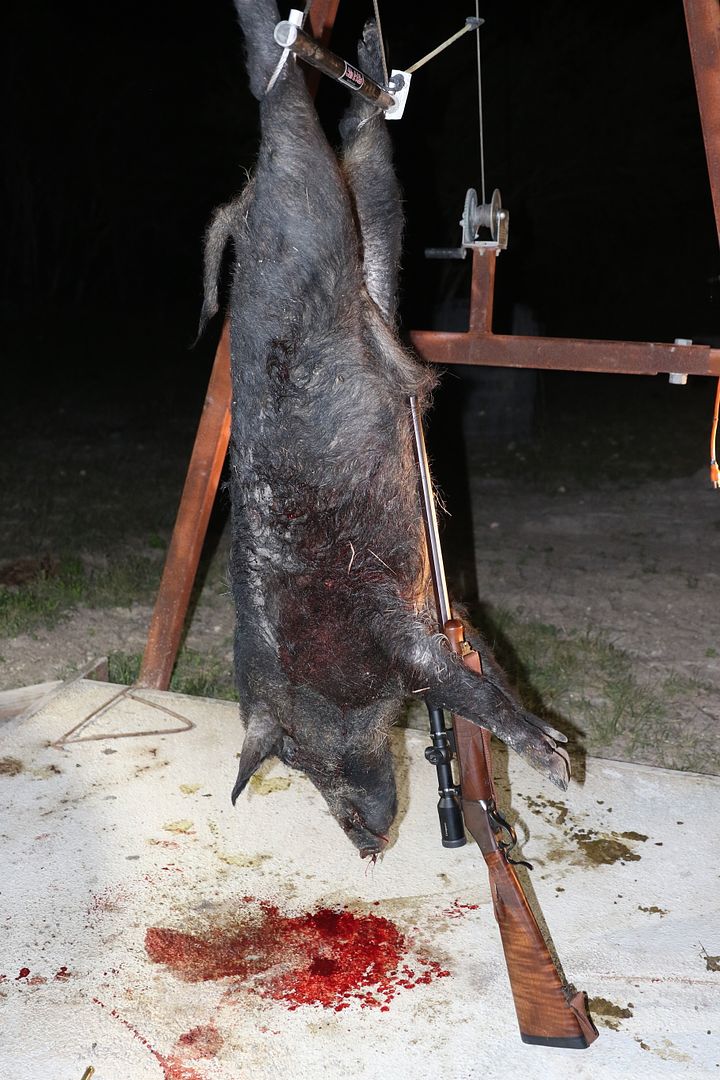 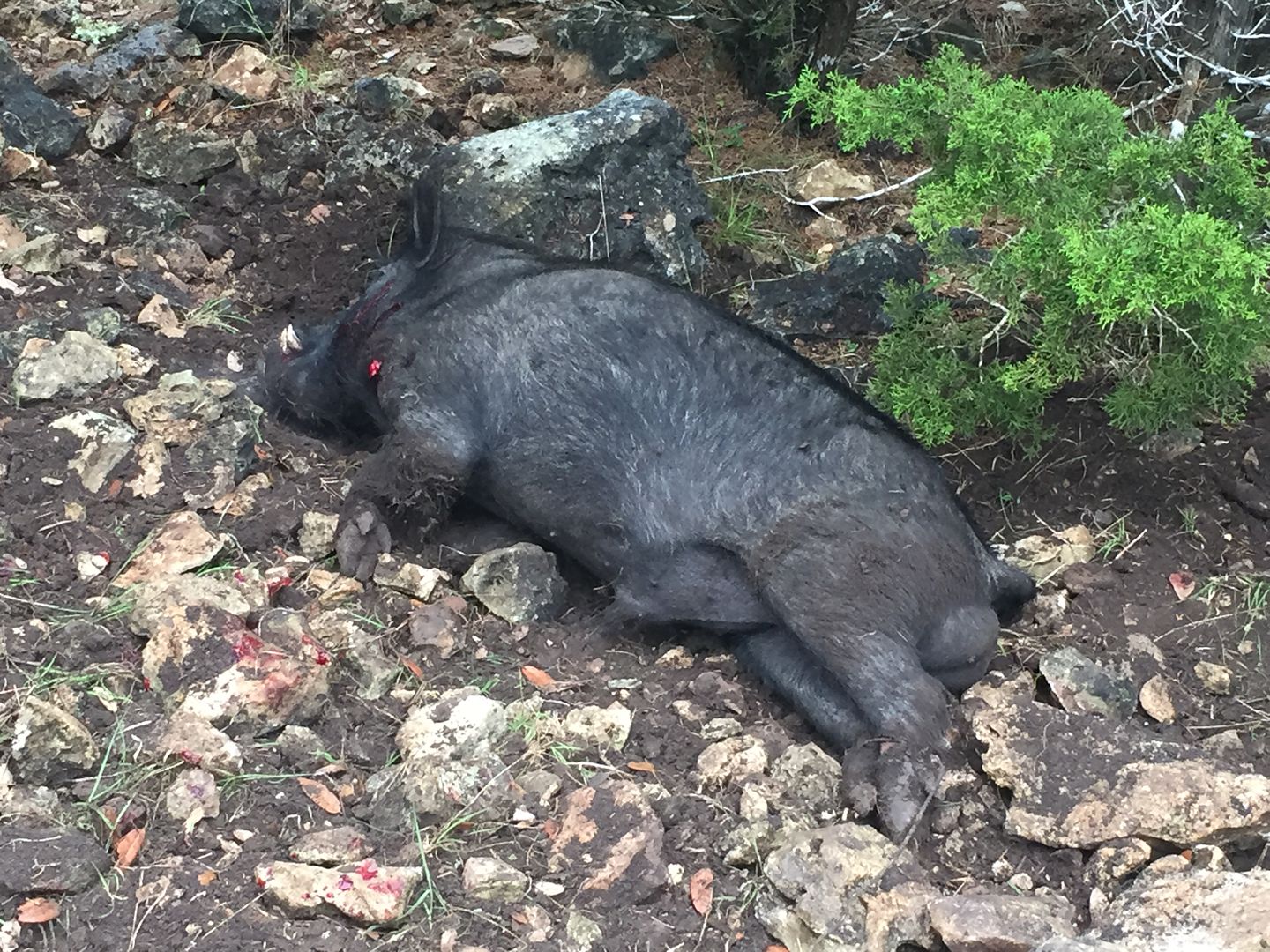 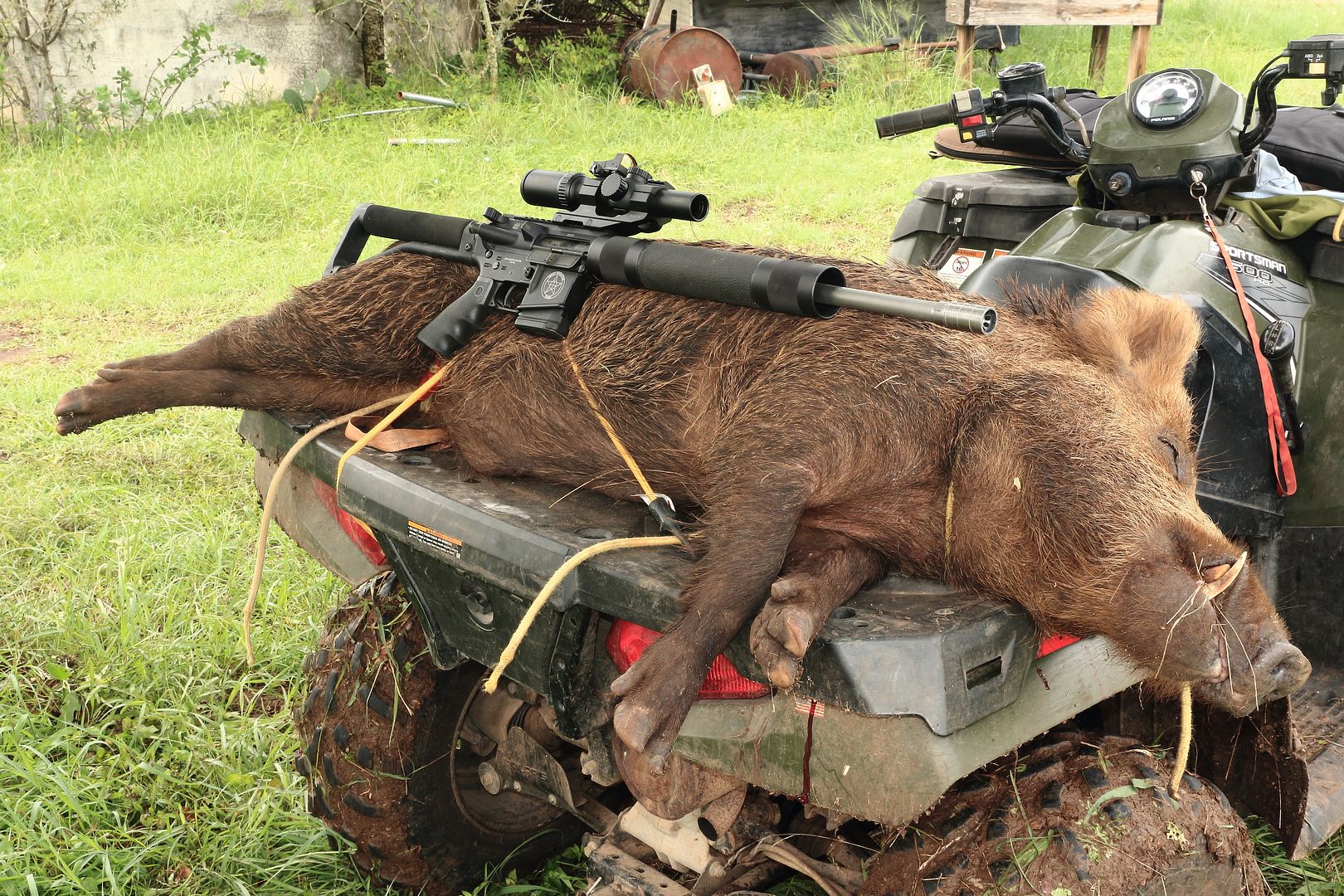 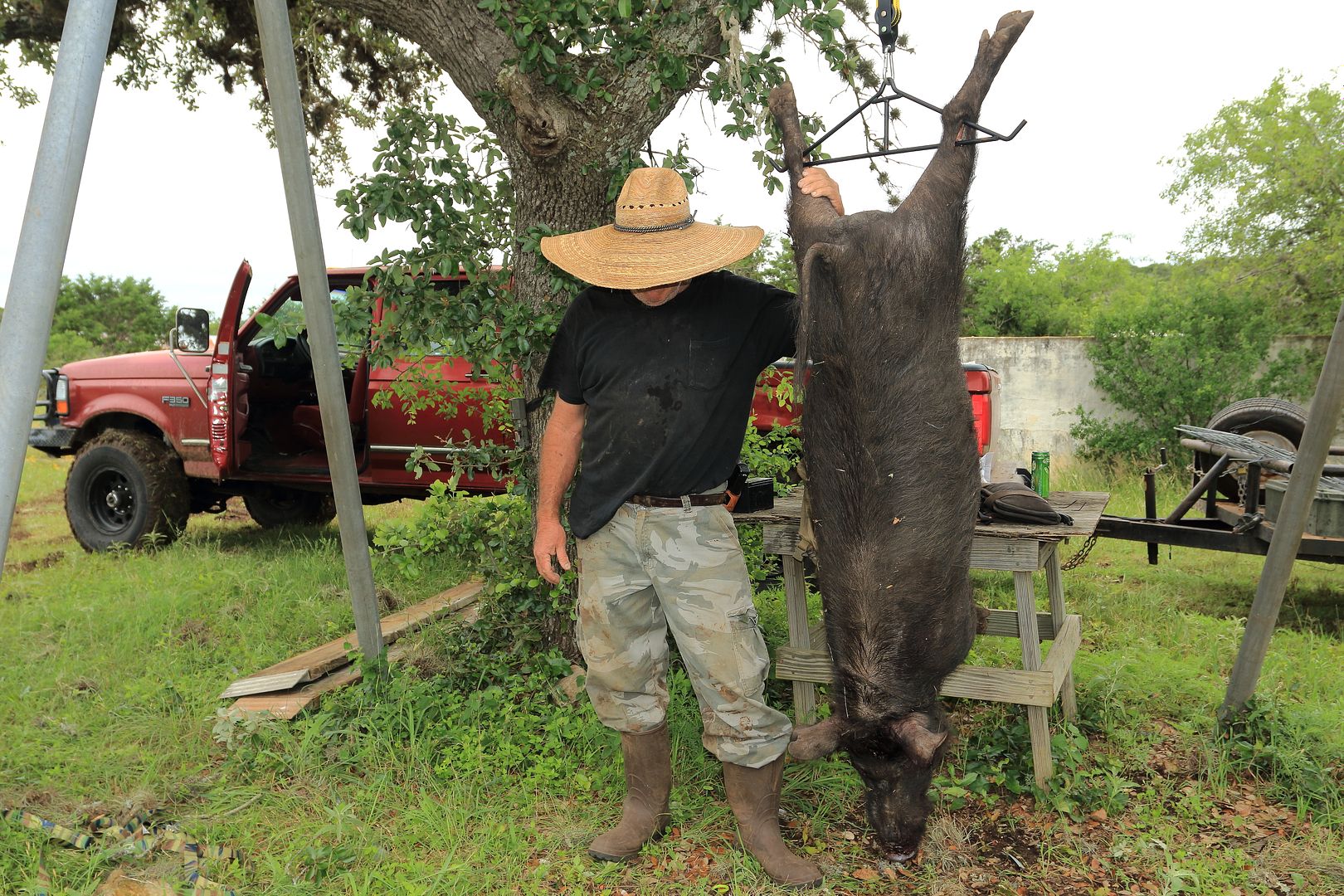 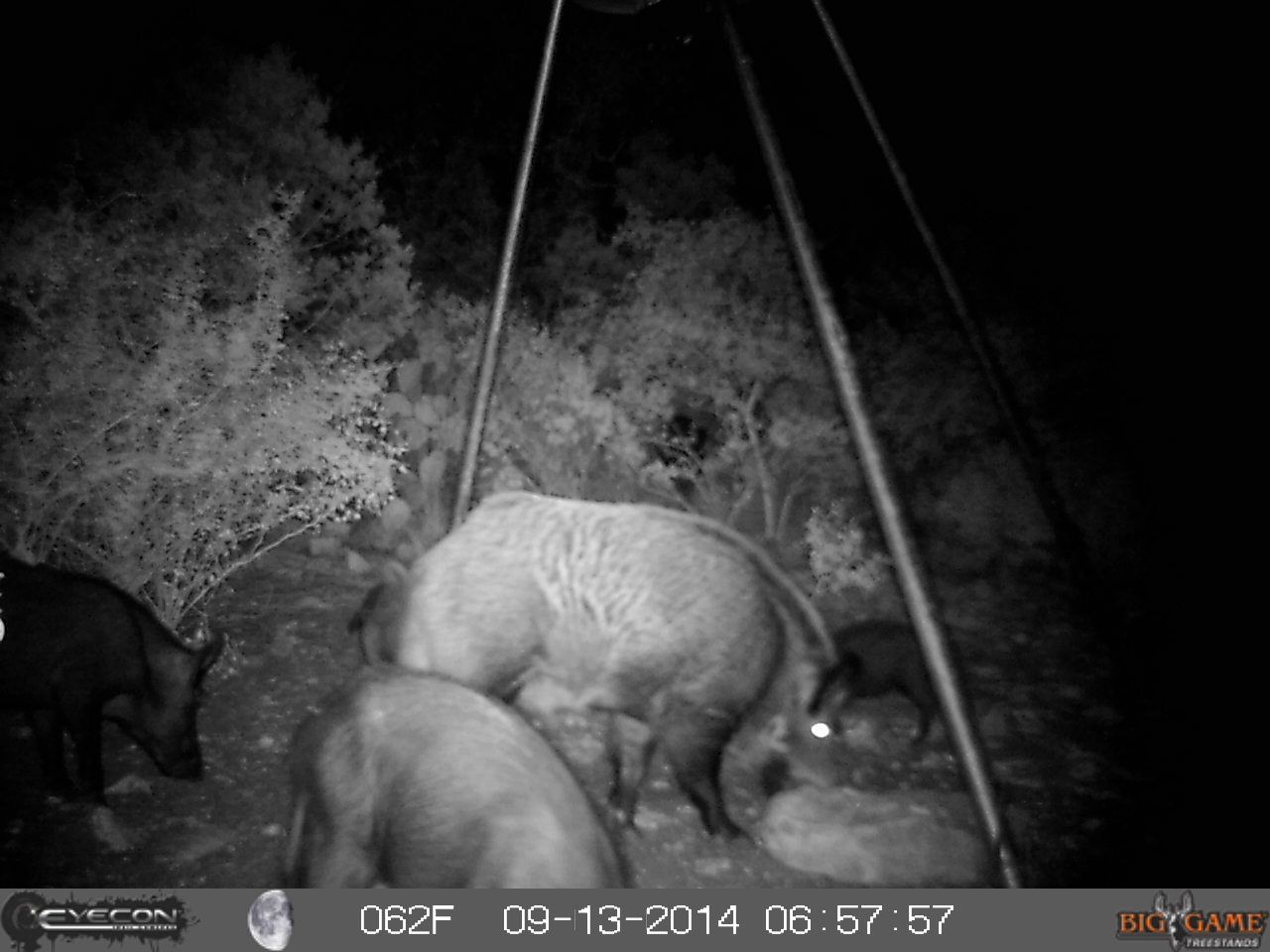 I wanted this guy bad, never saw him again other than this one shot on game cam! 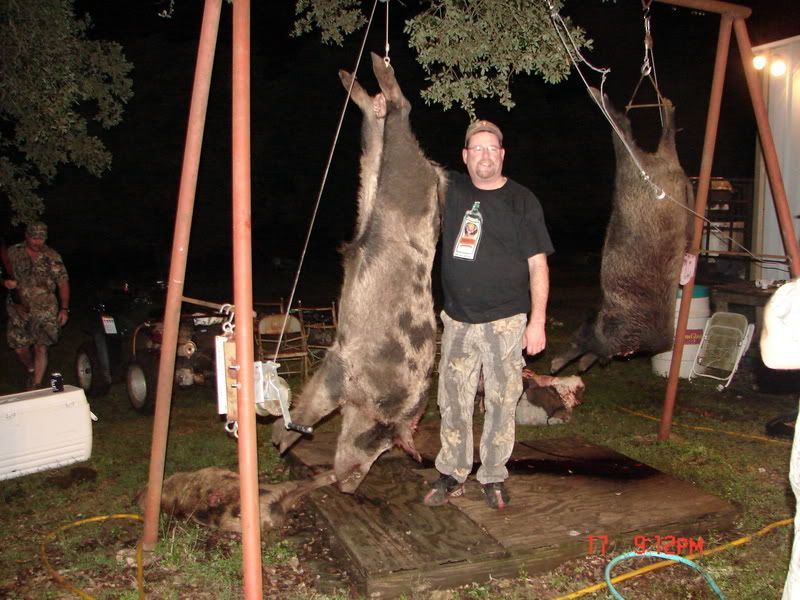 biggest hog I've weighed to date. 315 lbs. IIRC | |||
|
| Powered by Social Strata | Page 1 2 3 |
| Please Wait. Your request is being processed... |
|
 The Accurate Reloading Forums
The Accurate Reloading Forums  THE ACCURATE RELOADING.COM FORUMS
THE ACCURATE RELOADING.COM FORUMS  Hunting
Hunting  Hogs, Warthogs, Wild Boars, Javelinas Hunting
Hogs, Warthogs, Wild Boars, Javelinas Hunting  Changing Morphology of feral hogs
Changing Morphology of feral hogs

Visit our on-line store for AR Memorabilia

